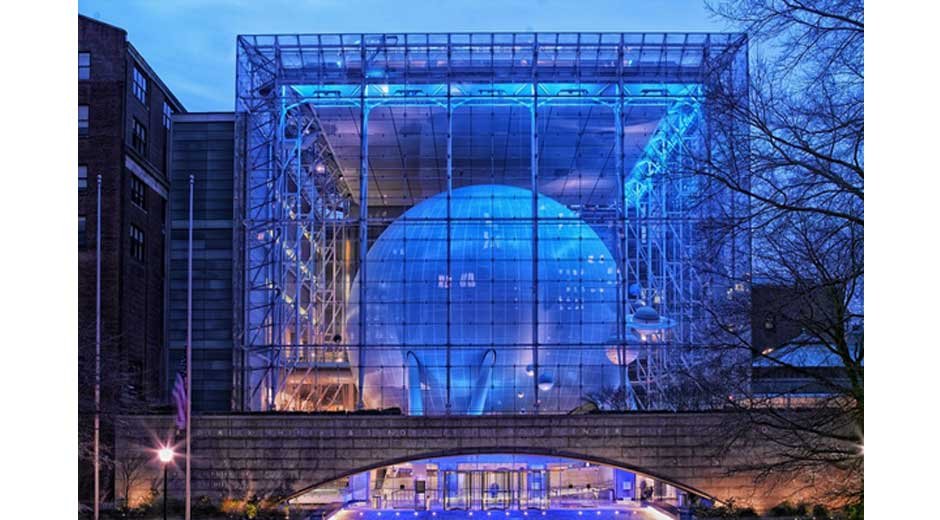Discover how contemporary lighting designs are reshaping urban environments.
The transformation of architectural lighting systems has fundamentally altered our perception of urban environments. The advent of modern lighting innovations including energy-saving LED setups together with interactive building facades has transformed architectural design approaches.
Market analysis shows that the global architectural lighting market achieved USD 10.20 billion in size by 2024 and this growth will continue. The architectural lighting market is expected to expand at a 7.7% CAGR between 2025 and 2030 which demonstrates the importance of lighting in contemporary architecture.
We will investigate how lighting innovations are transforming the face of contemporary cities.
Your Complete Design Guide
- Understanding Modern Lighting Fundamentals
- The Evolution and Impact of Urban Lighting
- Smart Technology Integration
- Sustainability and Energy Efficiency
- Human-Centric Design Approaches
- Implementation and Best Practices
- Future Trends and Innovations
- Measuring Success and ROI
Understanding Modern Lighting Fundamentals
Modern architectural lighting serves multiple purposes beyond traditional illumination. Lighting design today focuses on crafting memorable experiences while improving security and reshaping physical areas. More than half of the lighting market share belongs to commercial applications demonstrating businesses’ use of lighting to build more interactive spaces.
Think about it:
Each illuminated building reveals its own unique narrative while you stroll through a nighttime cityscape. The range from office buildings to entertainment venues displays how lighting shapes our perception and interaction with urban areas.
The Evolution and Impact of Urban Lighting
Urban lighting design has experienced a remarkable transformation. Asia Pacific stands as the dominant force in the architectural lighting industry while establishing global standards for innovative lighting solutions. This regional dominance showcases how modern cities are using lighting to:
- Create distinctive skylines
- Enhance public safety
- Reduce energy consumption
- Improve urban aesthetics
The outdoor lighting market is expanding rapidly as fast-paced urban development demands advanced infrastructure solutions. Architects now incorporate lighting into their initial design process which represents a core transformation in building design methods.
Smart Technology Integration
The advent of smart lighting systems is transforming building-environment and building-occupant interactions. By integrating with building management systems, these intelligent lighting solutions can:
- Automatically adjust to natural light levels
- Respond to occupancy patterns
- Create dynamic lighting scenes
- Reduce energy consumption
- Enhance user comfort
By 2032 the smart lighting market is expected to reach USD 18.65 billion due to the rising incorporation of these technologies in architectural design. The market expansion stems from the growing need for building solutions that prioritize sustainability and efficiency.
Sustainability and Energy Efficiency
Architects now design lighting systems differently because of society’s increasing dedication to sustainability. With the commercial segment leading the market, businesses are increasingly adopting energy-efficient lighting solutions that offer:
Environmental Benefits:
- Reduced carbon footprint
- Lower energy consumption
- Minimal light pollution
- Sustainable material usage
Economic Advantages:
- Decreased operating costs
- Lower maintenance requirements
- Extended equipment lifespan
- Enhanced property value
Human-Centric Design Approaches
The development of architectural lighting extends beyond technological advances and encompasses human-centered design principles. Modern lighting design studies the effects that lighting has on human behavior alongside health and wellbeing. This approach considers:
Physiological Impact:
- Circadian rhythm support
- Visual comfort optimization
- Stress reduction
- Productivity enhancement
Psychological Elements:
- Mood enhancement
- Spatial perception
- Emotional response
- Behavioral influence
The projected growth rate of 9.38% CAGR for the residential segment stands out as particularly noteworthy. Homeowners are becoming more aware of the benefits that professional lighting design can bring to their living environments.
Implementation and Best Practices
Following established best practices determines the effectiveness of architectural lighting projects. As the industry continues to grow, with the lamps segment showing a CAGR of 10.0%, professionals are developing more refined approaches:
Planning Considerations:
- Site-specific analysis
- User behavior patterns
- Environmental impact assessment
- Long-term maintenance planning
Implementation Strategies:
- Layered lighting techniques
- Balanced light distribution
- Glare prevention methods
- Adaptive control systems
Industry Standards and Compliance
Successful lighting implementation depends on adherence to current industry standards. Key considerations include:
Regulatory Requirements:
- Energy efficiency standards
- Safety regulations
- Environmental guidelines
- Building codes
Certification Programs:
- Energy Star ratings
- LEED certification
- Industry-specific standards
- Safety compliance
Measuring Success in Lighting Design
Comprehensive evaluation frameworks determine the effectiveness of modern lighting solutions. Professional lighting designers use various metrics to assess project success:
Performance Indicators:
- Energy consumption rates
- Light quality measurements
- System responsiveness
- User satisfaction scores
Long-term Benefits:
- Reduced operational costs
- Improved space utilization
- Enhanced safety metrics
- Increased property values
Cost-Benefit Analysis
Success in lighting projects depends on a thorough understanding of the financial impacts of contemporary lighting systems. While initial investments may be significant, the returns often justify the costs:
Investment Considerations:
- Hardware and installation costs
- Integration expenses
- Training requirements
- Maintenance planning
Return on Investment:
- Energy cost savings
- Reduced maintenance needs
- Increased property value
- Enhanced operational efficiency
Future Trends and Innovations
The upcoming developments in architectural lighting create numerous exhilarating opportunities. The rapid growth of the market signals major innovations on the horizon:
Emerging Technologies:
- Biodynamic lighting systems
- Solar-integrated illumination
- AI-powered light management
- Nanomaterial applications
Smart City Integration:
- Traffic management systems
- Public safety networks
- Environmental monitoring
- Emergency response systems
Impact on Urban Development
Urban planning decisions are now being influenced more and more by modern lighting systems. Their impact extends beyond individual buildings to shape entire communities:
Community Benefits:
- Enhanced public safety
- Improved navigation
- Better social spaces
- Reduced light pollution
Economic Impact:
- Increased property values
- Higher retail activity
- Enhanced tourism appeal
- Reduced energy costs
Embracing the Future of Urban Lighting
Modern lighting has an immense and undeniable influence on urban architectural design. The industry will grow from USD 10.20 billion to USD 18.65 billion by 2032 while maintaining its trajectory of evolution and innovation.
Key takeaways include:
- The shift towards smart, energy-efficient solutions
- Integration of human-centric design principles
- Growing importance of sustainability
- Emergence of innovative technologies
Continuous innovations ensure that the future of urban architectural lighting remains promising while transforming our interaction with built environments. The ongoing technological progress combined with increased recognition of lighting’s effects will produce innovative breakthroughs in this evolving sector to create sustainable and inspiring urban environments for future generations.










